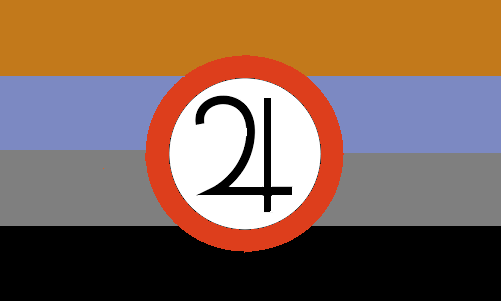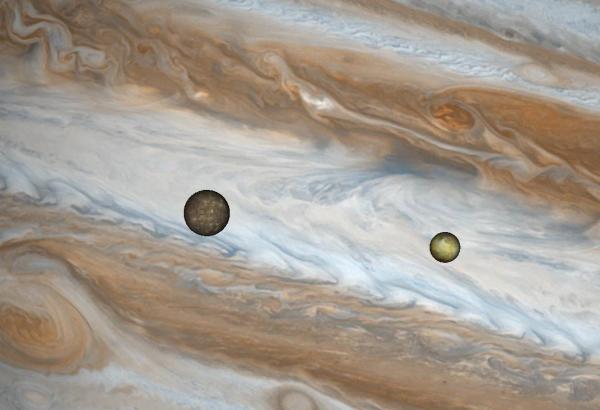BY LETTER
Jovian League
Interplanetary Age polity in Sol System | |
 Image from MacGregor | |
| Flag of the Jovian League. The red circle containing Jupiter's symbol represents Jupiter's Great Red Spot while the four stripes represent the Galilean moons; orange for Io, blue for Europa, grey for Ganymede, and black for Calisto. | |
In 278 AT, disparate groups seeking mutual assistance in what was then still largely the frontier, established the Jovian League. A loose association of colonies and outposts centered on the Galilean moons, the League quickly became the dominate power in near-Jupiter space.
The largest and most massive planet in the Sol System, Jupiter was at that time still an undeveloped wilderness, rich in natural resources. The atmosphere of the giant planet was the source of much of the helium-3 burned in the interplanetary ships of the time.
In the 290s and 300s the Jovian League began accelerating the mining of atmosphere of Jupiter for helium-3, an important fuel for fusion reactors and drives. At first the high cost of extracting the gas from a gas giant atmosphere made Lunar 3He much more attractive. In 309, however, the Cis-Lunar Alliance imposed huge tariffs on helium-3 exports. The Belt responded by turning to the now considerably cheaper supplies from Jupiter. The influx of helium revenue and its increased importance to the Solar economy rapidly changed the backwater status of the League. Although by no means a great power, the Galilean colonies were no longer a joke.
Helium-3 was extracted by robotic factories, floating in the atmosphere suspended from hot-hydrogen balloons beneath the rolling banks of clouds. To remove the refined helium from the atmosphere of this massive giant and lift it into orbit was very energy-intensive; however the magnetic field of Jupiter was a convenient and powerful source of energy, allowing the extraction to occur at a considerable profit.
Other sources of energy in the Solar System could not yet compete. Saturn, Uranus and Neptune were at this time still too remote and undeveloped. Antimatter, although falling in price and seen, especially by the inner Solar System, as "the energy source of the future", was still very expensive to manufacture and maintain.
Over time, the most important faction in the Jovian League became the Genetekkers, an association of tweaked humans sent by GeneTEK to colonise the outer solar system. The major adaptations included in the Genetekker genome were tolerance of microgravity and the high levels of radiation found in the Jovian system, although even with such tolerance, the Genetekkers remained behind shielding as much as possible when near the Jovian radiation belt, and built their colonies beneath protective ice and rock. The lucrative mining operations on Io were mostly carried out by remote controlled, non-sentient robots. Several factions in the Jovian League used constructed languages such as Esperanto in their inter-ship communications; many elements of Esperanto were eventually incorporated into the local lingua franca, together with English, Arabic and Chinese influences.
During the first half of the fourth century, the rival Genetekker polity the Gengineer Republic slowly subverted the Jovian League. While time has obscured many of the details of this confrontation, it is known that the Gengineer Republic favored much more radical genetic experimentation. The League's last remnants were absorbed by the Gengineer Republic in 396 AT.
 Image from Steve Bowers | |
| The moons Io and Callisto, strongholds of the Jovian League, in orbit around the giant planet Jupiter | |
Related Articles
Appears in Topics
Development Notes
Text by M. Alan Kazlev and Steve Bowers
Minor additions by MacGregor 2018
Initially published on 25 November 2001.
Minor additions by MacGregor 2018
Initially published on 25 November 2001.






